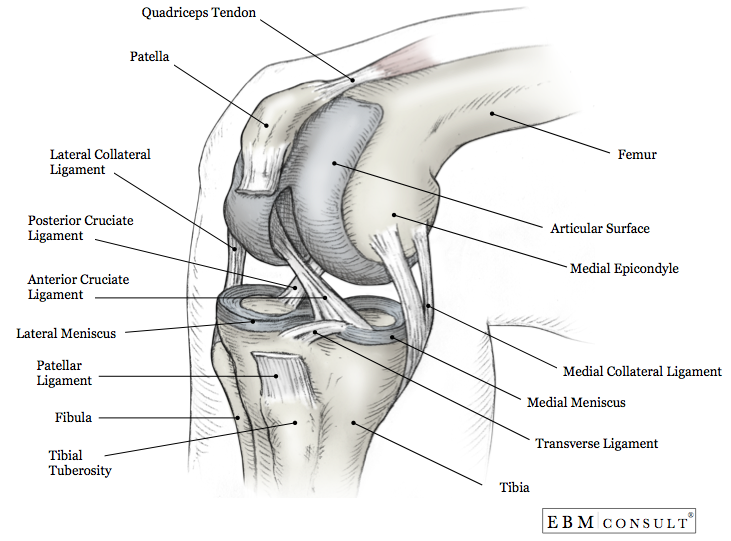Posterior Drawer Test
|
|---|
- The PCL is attached to the posterior intercondylar area of the tibia and passes anteriorly, medially, and upward to attach to the lateral side of the medial femoral condyle.
- This ligament prevents backward displacement of the tibia or forward sliding of the femur.
- The patient should be lying supine on the exam table
- Have the patient flex the hip and knees to 90°, feet should be flat on the table (the examiner may sit on the patients foot to ensure it stays flat). Note: Palpate the hamstring to confirm complete relaxation
- On the involved side, place your hands along the sides of the knee, palpate the joint line
- Apply an anterior-to-posterior directed force through the proximal tibia
- Note the degree of backward movement in the femur
- Repeat the test on the non-involved side and compare results
- Negative: noticeable end-feel and minimal movement
- Positive: absence of an end-feel and the proximal tibia falls back (excessive translation). The amount of posterior movement determines the grade of PCL tear.
- Grade 1 = 0 - 5 mm
- Grade 2 = 6 - 10 mm
- Grade 3 = 11+ mm
- Based on a Prospective, randomized, blinded, controlled study of 39 patients (19 with known PCL tears, 9 with ACL tears, and 12 normal controls). Orthopedic surgeons with fellowship training were able to determine PCL tears with 96% accuracy. (Rubinstein RA, 1994).
- Sensitivity: 90%
- Specificity: 99%
- Likelihood ratio:
- Positive test: LR: 90
- Negative test: LR: 0.1
- Isolated PCL tears are less common and usually result from a direct blow to the proximal tibia
- Assessing for the presence of the posterior sag sign enhances the tests diagnostic accuracy
- Bickley LS et al. Bates' Guide to Physical Examination and History Taking. 11th ed. Philadelphia, PA: Lippincott Williams & Wilkins. 2013;658.
- Malanga GA et al. Physical examination of the knee: a review of the original test description and scientific validity of common orthopedic tests. Arch Phys Med Rehabil. 2003;84:592-603.
- Marieb EN, Hoehn K. Anatomy & Physiology. 3rd ed. San Fransisco, CA: Pearson Benjamin Cummings. 2008;237.
- Rubinstein RA, Jr. et al. "The accuracy of the clinical examination in the setting of posterior cruciate ligament injuries." The American journal of sports medicine. Jul-Aug 1994; 22(4):550-557.
Anatomy

Technique
Results
Diagnostic Accuracy
Pearls
References

